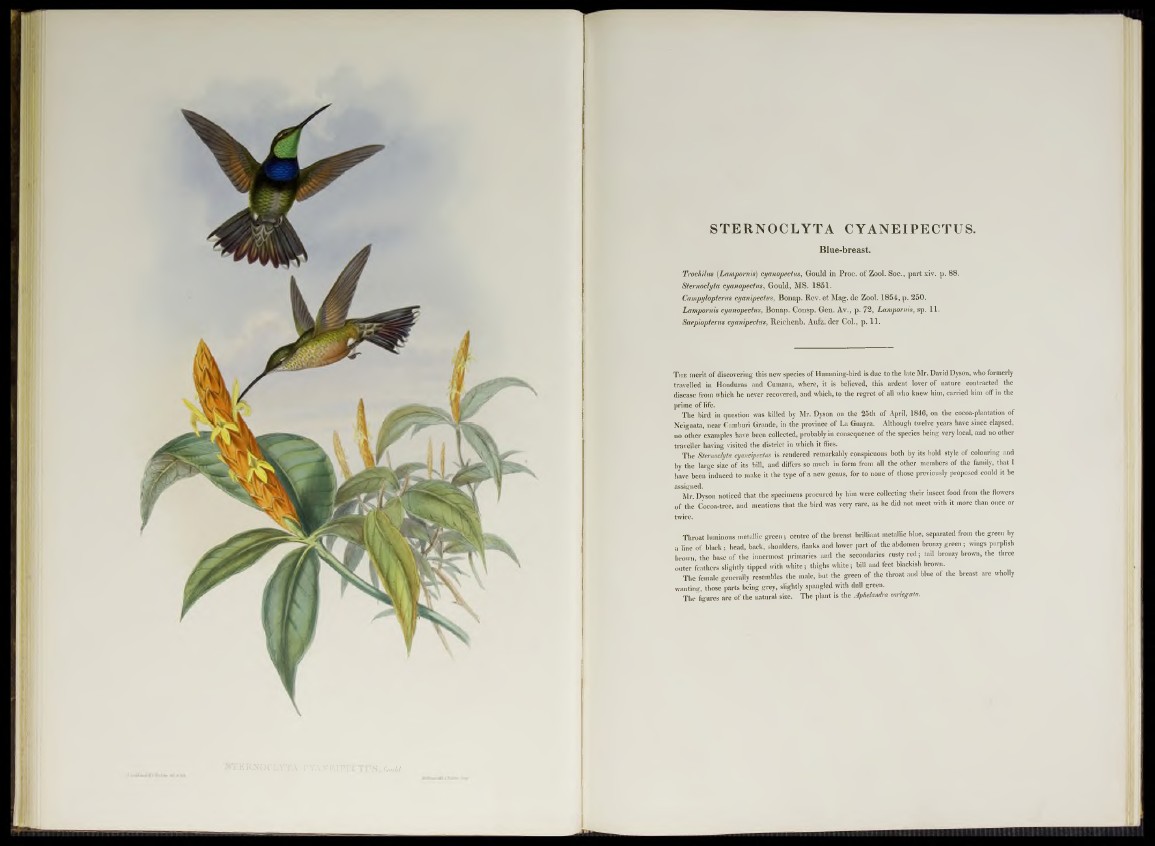
ITEjRBDCIXTA CYANTElFEi IS, Qoull
STERNOCLYTA CYANEIPECTUS .
Blue-breast.
Trochilus (Lampornis) cyanopectus, Gould in Proc. of Zool. Soc., part xiv. p. 88.
Sternoclyta cyanopectus, Gould, MS. 1851.
Campylopterus cyanipectus, Bonap. Rev. et Mag. de Zool. 1854, p. 250.
Lampornis cyanopectus, Bonap. Consp. Gen. Av., p. 72, Lampornis, sp. 11.
Saepiopterus cyanipectus, Reichenb. Aufz. der Col., p. 11.
T he merit of discovering this new species of Humming-bird is due to the late Mr. David Dyson, who formerly
travelled in Honduras and Cumana, where, it is believed, this ardent lover of nature contracted the
disease from which he never recovered, and which, to the regret of all who knew him, carried him off in the
prime of life.
The bird in question was killed by Mr. Dyson on the 25th of April, 1846, on the cocoa-plantation of
Neiguata, near Camburi Grande, in the province of La Guayra. Although twelve years have since elapsed,
no other examples have been collected, probably in consequence of the species being very local, and no other
traveller having visited the district in which it flies.
The Sternoclyta cyaneipectus is rendered remarkably conspicuous both by its bold style of colouring and
by the large size of its bill, and differs so mucli in form from all the other members of the family, that I
have been induced to make it the type of a new genus, for to none of those previously proposed could it be
assigned.
Mr. Dyson noticed that the specimens procured by him were collecting their insect food from the flowers
of the Cocoa-tree, and mentions that the bird was very rare, as he did not meet with it more than once or
twice.
Throat luminous metallic green ; centre of the breast brilliant metallic blue, separated from the green by
a line of black; head, back, shoulders, flanks and lower part of the abdomen bronzy green; wings purplish
brown, the base of the innermost primaries and the secondaries rusty red; tail bronzy brown, the three
outer feathers slightly tipped with white; thighs white; bill and feet blackish brown.
The female generally resembles the male, hut the green of the throat and blue of the breast are wholly
wanting, those parts being grey, slightly spangled with dnll green.
The figures are of the natural size. The plant is the Aphelandra mriegata.